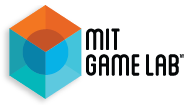Playing at Real Estate Development in China!

Originally posted at the Samuel Tak Lee Real Estate Entrepreneurship Lab blog
Since August, the MIT Game Lab has been developing a game about real estate entrepreneurship and socially responsible development for the Samuel Tak Lee MIT Real Estate Entrepreneurship Lab. This past April, Sara Verrilli and I visited China to test our game with undergraduate students in urban planning, architecture, real estate development, and landscaping. We also wanted to get a sense of the scale of real estate development currently in progress there. Our first stop was in Hohhot, at the Inner Mongolia University of Technology.
An incoming graduate student and an instructor at IMUT gave us a two day architectural tour of Hohhot. We saw construction sites in every phase of development, along with a healthy mix of new and old architectural styles. Outside the city, we visited villages in various states of renovation – some being rebuilt, some occupied after renewal, and some still in use, awaiting work. Those two days inspired new ideas for our prototype game’s look and feel – our title screen is now a picture from a district of Hohhot designed by our host, Professor Rong. The ever present blue gates at each construction site became the new icon our artist, Miranda Cover, created for the game.
The night before we met with the students, we taught the game to the instructors and graduate students who were our guides. They enjoyed the game, and were a great help with translating and assisting the students in learning the game the next day.
For the actual test, we played the game twice. The first game was a shorter introductory one, and the students played in pairs, so they could aid each other in learning the game. While they learned the rules, they also discovered translation errors both in game and on our reference cards. Fortunately, we had IMUT instructors who knew the game, and could both translate and make suggestions for future improvements.
After lunch, the students played again, and this was our main test. We divided them into two groups of four, and each group had an IMUT instructor and an MIT staff member to answer questions and observe their game. To keep the game competitive, we offered an MIT logo tshirt to the winner from each group. While this inspired more competitive games, the students still helped each other out. The games were played on a single shared tablet, and while the students could choose to keep the tablet private on their own turns, they tended to keep it on the table, in public view. The students clearly enjoyed the game both times they played it, and the second time, turns were much faster and scores higher.
As designers, we want a player who makes poor decisions early in play to be able to recover if they notice their mistakes. We saw this happen in Hohhot; players changed their strategies mid-game, and were rewarded with better results. We also wanted to know if the game mechanics gave the players the ‘feeling’ of being an entrepreneur, or a real estate developer, or an urban planner – and the students confirmed that yes, they did. Different playstyles did cause different roles to feel more or less expressed in the game.
After leaving Hohhot, we conducted another test with students from Tsinghua University in Beijing. They quickly mastered the gameplay and made nuanced observations about how the systems in our game compared to the real world. Describing what they wished the game could do, these students asked for features and mechanics we had already started designing — confirming we were on the right track!
Based on the feedback from these tests, our student team spent the remainder of their Spring semester at MIT making changes. The user interface and the in-game symbols received significant criticism, so we revised the game’s appearance. We also updated building names and did another game balancing pass. We want players to consider their social responsibility to invest in public infrastructure to help the city thrive, but we also want them exploring the system of debt and profit within the game, to wisely use capital and take calculated risks, as entrepreneurs must.
The game is currently being tested as part of the comprehensive curriculum of the MISTI-STL Summer Camp experience being run in China this summer. In July, I will be observing the camp in Qingdao and Xiamen, as well as conducting tests in Shanghai and these two cities with other interesting types of players: high schoolers who might consider real estate development as a career and professionals who are already practicing real estate development. We have another year of prototyping and design research after this summer and are excited to continue introducing more systems of real estate development and entrepreneurship into our game!
